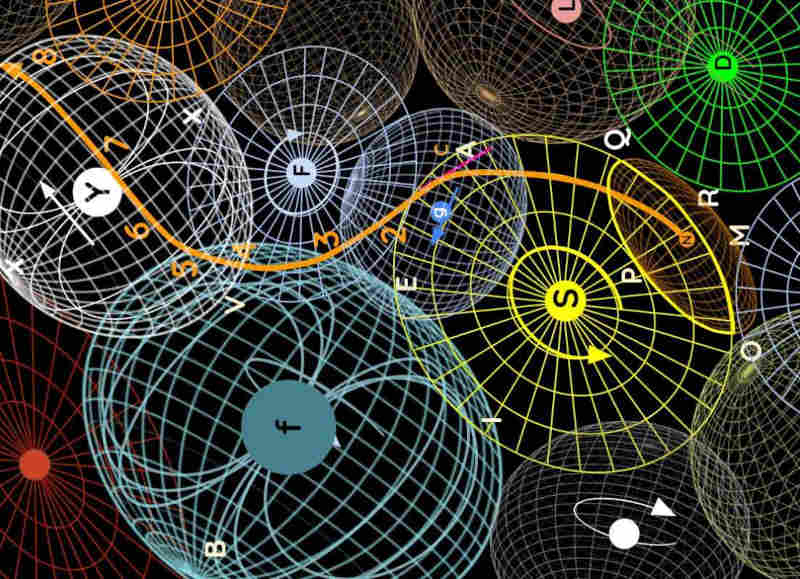How Comets are Born
Table of Contents
126. The Initial Motion of a Comet
Let us assume that:
Star Nhas more solidity than the air-aether globules which are distant from the center ofVortex S. [Therefore, it will not totally sink towardsS]- the air-aether globules of
Vortex Sare equal among themselves
It can initially be carried in various directions and move more or less towards S, depending on the various dispositions of other vortices it encounters.

It can be variously retained or pushed by them, and also depending on its solidity.
The greater its solidity, the more it resists being deflected by other causes from its initial direction.
Nevertheless, it cannot be pushed with great force by neighboring vortices because it is assumed to have previously been at rest near them.
Therefore, it will not be carried contrary to the motion of vortex AEIO towards the parts between I and S but only towards those between A and S.
It should eventually reach a point where the line described by its motion tangentially touches one of those circles according to which the air-aether rotates around center S.
Once it reaches there, it continues its course further, moving increasingly away from center S until it eventually migrates from vortex AEIO to another.
For example, it might initially move along curve NC.
Point C is where NC touches the disk created by the air-aether globules around center S. At C, Star N will immediately recede from S along the curved line C2 situated between this disk and the straight line tangent to it at Point C.
But as soon as it reaches point C, it encounters the air-aether moving more swiftly*. This increases its speed and diverts it from the [pink] straight line which is a tangent to that disk.
Superphysics Note
This makes it go to Curve C2. Star N will come closer to the tangent line:
- the more solid it is
- the faster it is from
NtoC.
127. The Continuation of a Comet’s Motion Through Various Vortices
As it progresses through this vortex AEIO, it gains such a force of agitation that it can easily migrate into other vortices and from these into others.
When it reaches 2 and exits the boundaries of Vortex S, it still retains the air-aether flowing around it for a while.
It only gets free from it when it penetrates sufficiently into Vortex AEV, specifically until it reaches 3.
In the same way, it carries the air-aether of this Vortex AEV with it towards 4 into the boundaries of the next vortex.
This process repeats with all successive vortices.
Its path is curved depending on the different motions of the air-aether in the vortices that it passes through.
Thus, its path 234 is curved differently from the previous NC2 because:
- the air-aether of
Vortex Frotates fromAthroughEtowardsV - the air-aether of
Vortex Srotates fromAthroughEtowardsI.
However, path 5678 is almost straight because the air-aether of Vortex Y rotates around Axis XX.
Stars that migrate from one vortex to another in this way are comets.